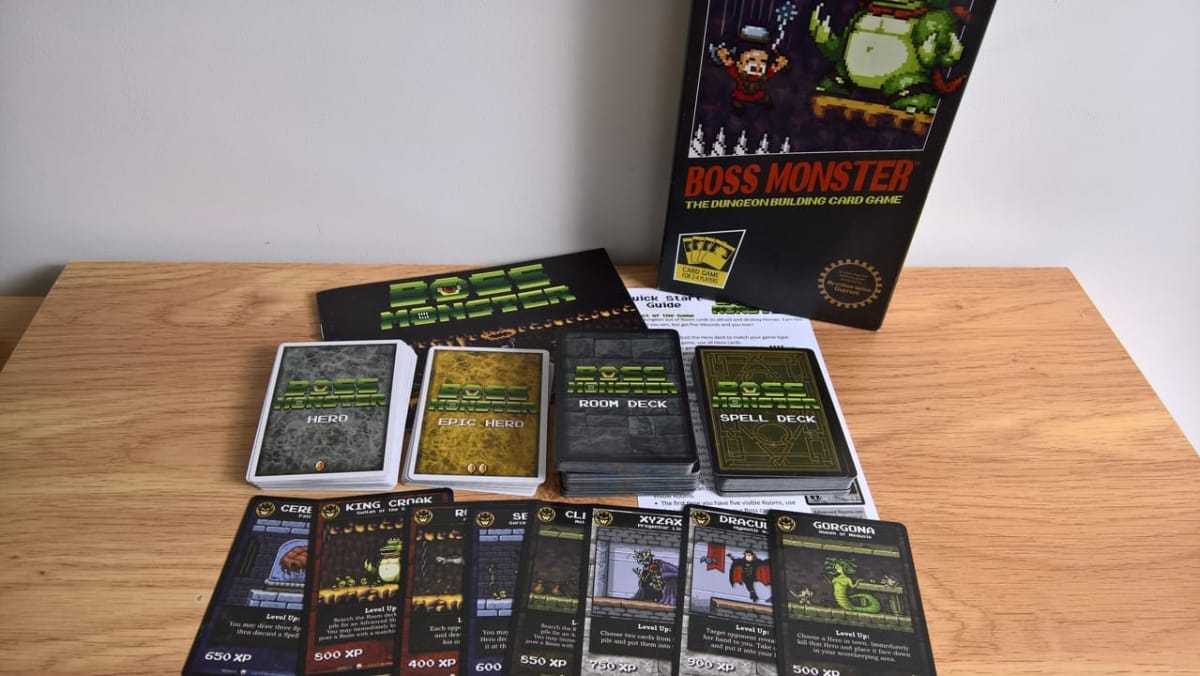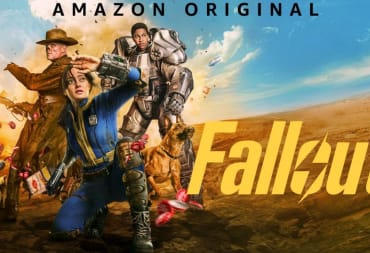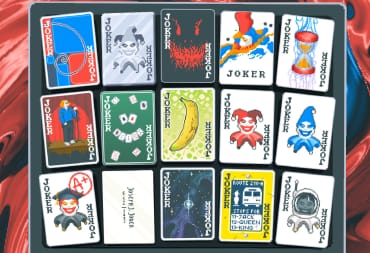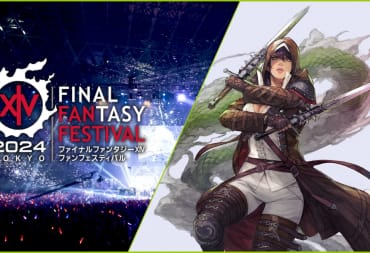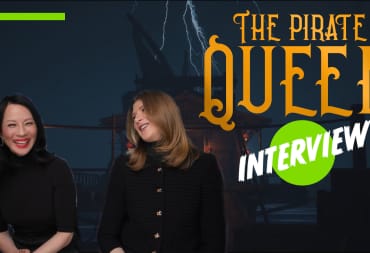Welcome to the third part of this series of articles here at TechRaptor where we look into the development process of making a video game into a tabletop game. The first part focused on Wargaming, looking at Fallout: Wasteland Warfare, then we looked at Board Gaming with Dark Souls: The Board Game. This time we're going to look at Card Game with Boss Monster by Brotherwise Games as our focus. In this article, we'll take a look at the core Boss Monster set, how the video game theme transitions to the tabletop, and we will also talk to Chris O'Neal, the Co-Designer of Boss Monster and joint founder of Brotherwise Games.
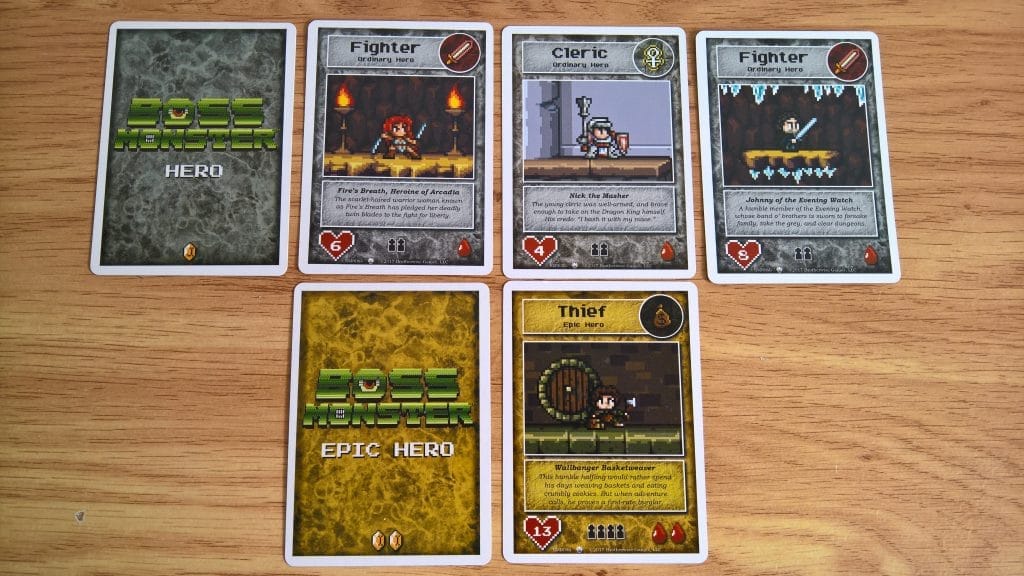
What is a card game?
A card game could be described as any game that uses cards, but with more and more blending of genres, it's becoming harder and harder to generalize game types into formal structures. That is happening with wargaming and board games, which are blending elements of each and also including roleplaying elements in their structure. Many board games and wargames are also using cards as a mechanic. Games like Warhammer Underworlds Shadespire and GKR Heavy Hitters use cards very differently but still as a core mechanic of gameplay, and we've also seen card games like Star Wars Destiny use dice as a mechanic but still keep the core gameplay through cards.The main types of card games are:
- Collectible Card Games (CCGs) like Magic: the Gathering, Pokémon, and Star Wars Destiny (can also be called a Trading Card Game - TCG) are sold in a format where some of the distribution is randomized
- Living Card Game (LCGs) like the Legends of the Five Rings LCG, Netrunner, and the Lord of the Rings LCG are sold in a fixed format where the cards don't change from pack to pack
- Adventure Card Game (ACGs) like the Pathfinder Adventure Card Game, the now out of print Warhammer Quest Card Game, and the recently announced Heroes of Terrinoth. These are games of fixed packs, but operate more like roleplaying games (RPGs) that simply use cards rather than character sheets to display the information.
- Boardgame-like card games. This isn't a fixed term, but there's a growing trend in boardgame that use cards almost as the sole mechanic, like Boss Monster, Death Angel, and the Dark Souls Card Game (note, these are different from boardgames that have cards as a mechanic, as those are still predominately a board game, Discworld Ankh-Morpork for example)
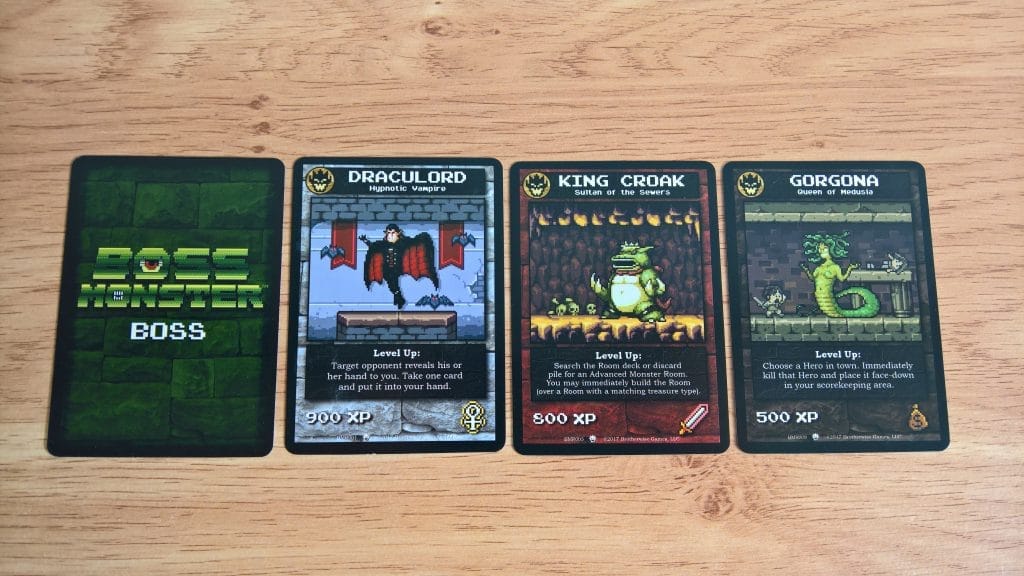
What is Boss Monster?
Boss Monster is a tabletop card game that brings the feel and theme of 8-bit video games to the tabletop. In Boss Monster, two to four players create dungeons to lure in and defeat heroes; the player who defeats ten heroes first wins. Heroes defeating a dungeon by making their way all the way through to the Boss Monster at the end inflicts one wound, and players are defeated if their Boss Monster takes five wounds. There are several different classes of heroes who are attracted to specific room types, which are drawn randomly from the deck. Boss Monster plays like a side scrolling retro video game and includes artwork that emphasizes the theme.After Boss Monster's release, several expansions were also released, followed by a revised edition and Boss Monster 2. Boss Monster is also available in a digital edition and also playable in a tabletop style with Boss Monster VR.
Boss Monster Review
The first thing that anyone will notice about Boss Monster and what will appeal to many players is how great the artwork is at capturing the retro feel, even the boxes (in particular the expansion boxes that look like old-style Nintendo packaging). The artwork, as you can see in the images in the review, is fantastic and includes numerous retro gaming references, nods, and humorous gems. Even before your first game, Boss Monster captures the theme perfectly and that only increases during gameplay, as the side scrolling and straight-forward gameplay really does feel like the games of old.To play Boss Monster, players randomly draw a Boss Monster card that will be their character for the game. Over the game they randomly create a dungeons to attract heroes and draw heroes that depending on their class and your dungeon, will decide to enter your dungeon or not.
The Boss Monster you draw only has a slight effect on the game. It adds a set type of treasure to your dungeon, which is used to lure heroes and also have a once per game ability that is used when you've completed your dungeon. For example, the Draculord adds to the treasure that attracts Clerics and also lets you look at your opponent's hand and take one card. Or Gorgona who attracts Thieves and lets you automatically kill one hero in town without having to lure them into your dungeon.
The dungeon itself is built each turn by placing dungeon rooms from your hand into your dungeon, which ends up being a chain of up to five rooms that have special abilities and also a damage stat that it deals to heroes as they pass through. There are Trap and Monster rooms, as well an advanced version of each. Bottomless Pit for example is a trap room that deals one damage to a hero, but can be destroyed to kill a hero in that room, which is an extremely powerful ability for dealing with high health characters. The Succubus Spa is a monster room that also deal one damage, but if a hero dies in the room, you can take a random spell or room card from your opponent's hand. Advanced rooms are rooms that have to be built on top of other rooms but can only be built on top of rooms with a matching hero lure symbol. The Monster's Ballroom is an advanced monster room that has to be built on op of a room with a Fighters lure icon and it deals damage to a hero equal to the number of monster rooms in your dungeon.
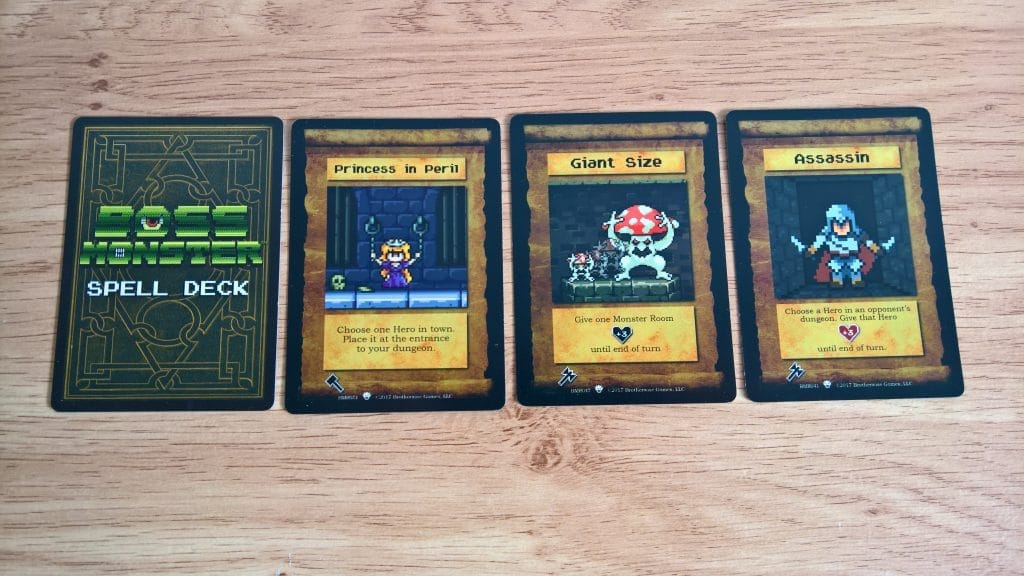
The heroes are lured to the player's dungeon with the most treasure lures for their type. Thieves go for the money bag icon and fighters the sword. Heroes go through your dungeon room by room, taking the damage that each room issues. If they survive until the end, they do a wound to your Boss Monster. If this happens with five heroes, your Boss Monster has been defeated and you lose. If your dungeon defeats the hero, then they are removed and added to your defeated pile. Defeat ten heroes and you win. The heroes feature some amusing flavor text, like Johnny of the Evening Watch, a fighter that has taken the grey. Or Nick the Masher, a Cleric who's credo is "I bash it with my mace." There are also advanced heroes who don't come in until all of the ordinary heroes have been taken out. Epic heroes have a much higher health stat than their ordinary counterparts, like Wallbanger Basketweaver, an Epic Thief who has 13 health.
Players also have access to Spell cards, of which two are drawn at the start of the game and more are only drawn through other cards and abilities. Spell cards have powerful unique abilities like Princess in Peril, which lets you lure a hero to your dungeon that wouldn't normally have come, and as the player gets to choose which hero, they can pick one that they know will be defeated by their rooms. Other examples of spell cards are Giant Sized, which adds 3 damage to a room and Assassin, which has artwork resembling a very famous video game assassin and lets you add 3 health to a hero in an opponent's dungeon.
Games of Boss Monster are fun, with extremely simple mechanics that keep the game flowing. What Boss Monster does incredibly well is theme. The side-scrolling nature of the heroes working their way through a dungeon has a great retro feel, enhanced by the artwork, card names and flavor text throughout. Boss Monster does suffer from poor draws though, as any game involving cards and random draws does. If the heroes coming out of town don't match any of the treasure rooms a player has, none will visit their dungeon, which can lead to some rounds where they aren't doing much other than building rooms, but that is rare and draw dependent—most games do flow well. There is a little interaction with the other players with some spell affecting their dungeon or the heroes exploring their dungeons, but players are almost playing a solo game at the same time as other players, and more interaction between players would be great. We would also like to see the Boss Monsters have a bigger effect on the game. Their single use ability does make each game different, but an every turn ability, or maybe a signature room, would have made the Boss Monsters feel more involved.
Playing Boss Monster is very enjoyable and with the currently available expansions with more planned means that it has a lot of scope. It's extremely easy to learn, which means that as a pick up and play game or a filler game, it's incredible. It doesn't have a deep tactical challenge as games are very draw dependent, but that doesn't take away from the fun. If you love the retro feel, then you will find a lot to love about Boss Monster.
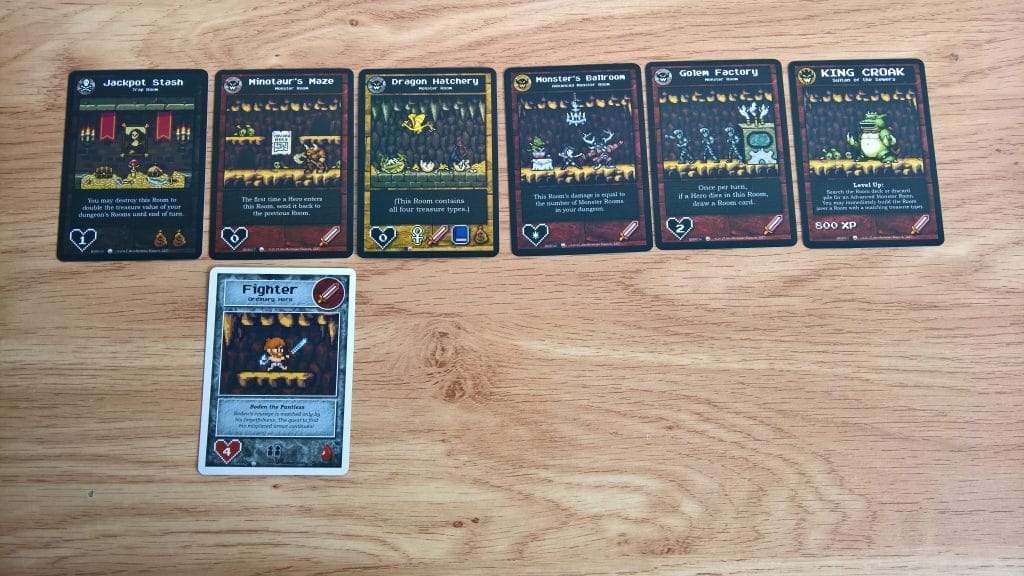
Interview with Chris O'Neal, Co-Designer of Boss Monster
TechRaptor: How did Boss Monster come to life? What was the initial idea? Did it always start life as a card game?
Chris O'Neal: Boss Monster was always a card game, but one that looked radically different at different stages. It originated decades ago as a game about acquiring popularity in high school. That iteration didn't last long (thankfully). During development it slowly morphed from a game of hero building, to a hybrid card game/rpg, to a dungeon building game. The dungeon building started off pretty differently, though. in an early incarnation it was all top down. It wasn't until the dungeon cards made the leap to a side-scrolling dungeon that we realized it was perfect for a retro-video game theme.TR: Talk us through the rough process of its creation timeline. How long was it between stages?
CO: As mentioned above, Boss Monster started decades ago, but its current form came to life over a period of about two years. my brother, Johnny, and I, found ourselves in the same city for the first time in 20 years. We were able to get together a lot more and start gaming again. This led, as it often does, to lots of critiquing the games we were playing and lots of homebrewing of rules. Eventually, this led to a bet, the first person to complete a working prototype of a game would get dinner bought by the other. I won the bet (with a twist on the classic game of memory), but Johnny created the better game, based on a concept he had created years earlier. After two more years of development, that game became Boss Monster.TR: What was the biggest change from conception to publication?
CO: There were so many. Boss Monster's development was not linear in any way. with nothing at stake (we both had successful day jobs), we were free to try out any idea that came up. the biggest change from my point of view was the transition from playing the hero to playing the bad guy. when we made that decision, suddenly everything seemed fresh and interesting again. it really made the game blossom.TR: Were there any difficulties in creating Boss Monster?
CO: Ha! yes, so many. We'd never created a game before, much less published one. It was an unending comedy of errors in that first year. But we learned quickly and tried to never make the same mistake twice.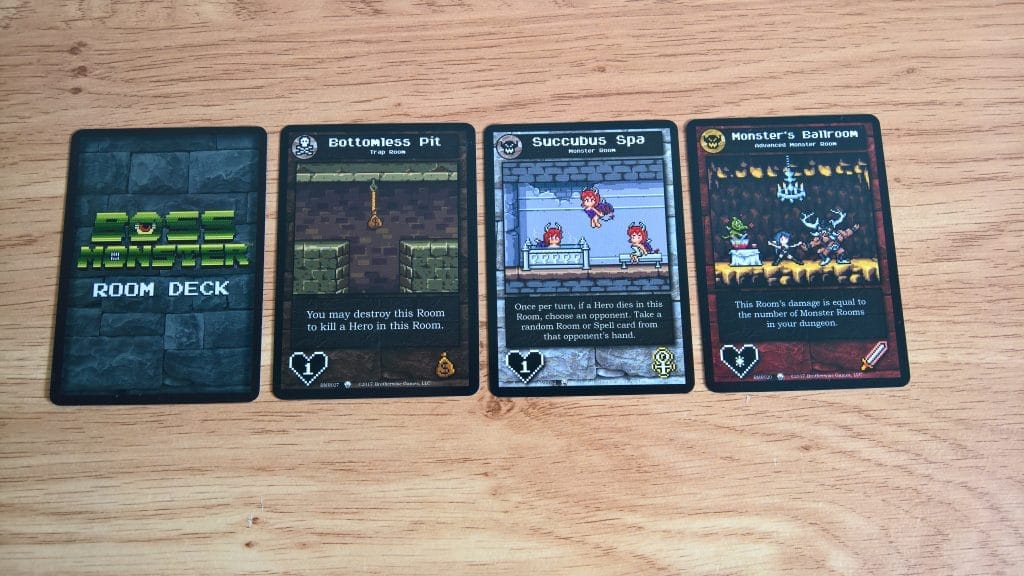
TR: Theme is obviously a huge part of Boss Monster, how difficult was it to balance theme with playability?
CO: The mechanics for Boss Monster came first. early versions of the game had nothing to do with retro videogames. When the mechanics made the leap to side-scrolling dungeons, that's when we realized there was a perfect, ready-made theme just waiting to be layered on top of it. Now, with expansions, the theme helps in inspiring card ideas, and even mechanics (e.g. the minibosses in the upcoming Boss Monster: Rise of the Minibosses), but we never cram in a thematic idea unless it works with the mechanics.TR: How difficult was it to capture the video game feel on the tabletop? Was the feel a priority or a by-product of the theme?
CO: I'd say it's all intertwined. It's important to remember that for a huge chunk of our players, they're too young to remember side-scrolling games. Boss Monster's theme works because it captures a lot more than just retro video games. We pop in current cultural references and have tried to craft a look that appeals to more than just nostalgic 40-somethings.TR: You've got a clear retro target audience, what were some of the must have's for mechanics?
CO: The side-scrolling nature of the dungeon does it for most players. They get it immediately. But that's not the only throwback to retro games. The damage and health hearts, the bosses' level up abilities, even the items in the Tools of Hero-Kind and Implements of Destruction expansions; all of these contribute to that retro feel.TR: What was a must have card in terms of your target audience?
CO: King Croak is probably the card that does the best job of communicating what we're trying to accomplish with the game. Everyone gets that he's a satire of Bowser, and once they get that, everything else just falls into place. The side scrolling dungeon, the heroes, the various monsters and traps. Boss Monster takes you back to your childhood, but it also tries to inject a fair bit of modern pop sensibility as well for those players who weren't retro gamers.TR: The art obviously plays a big part of enforcing the theme. How closely did you work with the artists? Were the embedded with the team through design and playtesting?
CO: Most of our sprite artists are freelancers who we met and recruited from the very lively community of pixel artists. We send each a detailed brief of each scene, along with the references we are satirizing, or hinting at. Ultimately, however, the artists take the lead on each scene, and they're so good we'd be fools to get in the way of that process.
TR: What's the future for boss monster? Are there any further expansions or editions planned?
CO: Well, we've got Boss Monster: Rise of the Minibosses coming out in July. It's our 2nd full-sized expansion (after The Next Level) and it's tons of fun. It introduces two all new mechanics: minibosses and coins, and those two additions open up a ton of new game play. Our current plans are to keep the game eternally fresh with new introductions every year, but we'll see what the future holds.TR: Which is your favorite boss monster?
CO: Tough one. I love them all. For ability, I might have to go with a classic: Robobo's room destruction ability is one of the strongest in the game. For flavor, maybe Killa. I loved Donkey Kong back in my day and Killa pokes fun at the mighty Kong.TR: Which is your favorite dungeon room?
CO: The Omega 42 from the Crash Landing set is one of my faves. Not only is it satirizing one of my favorite sci fi movies, it's a blast to play if you know what you're doing. It's a card that may elude a player that's new to the game, but for players with more experience, it can make a dungeon deadly. That's one of the things we tried to do with the game: make it as accessible as possible for new gamers, and non-traditional gamers, but add in as much nuance as possible for veterans.TR: What are some of your favorite retro games?
CO: Legend of Zelda is the game that started our love of video games. my brother and I would play that non-stop when it first came out. I can still hear the music and picture the two of us crouched in our dad's office, playing it on this tiny tv that sat on a shelf. Good times.TR: Thank you very much for talking to us Chris, we look forward to playing Boss Monster: Rise of the Minibosses this month.
The copy of Boss Monster used in this review was provided by Brotherwise Games.
Have you played Boss Monster? Which is your favourite Boss Monster or Dungeon Room? Are there any other games you'd like us to visit in our Video to Tabletop series? Let us know in the comments below.
Have a tip, or want to point out something we missed? Leave a Comment or e-mail us at tips@techraptor.net
